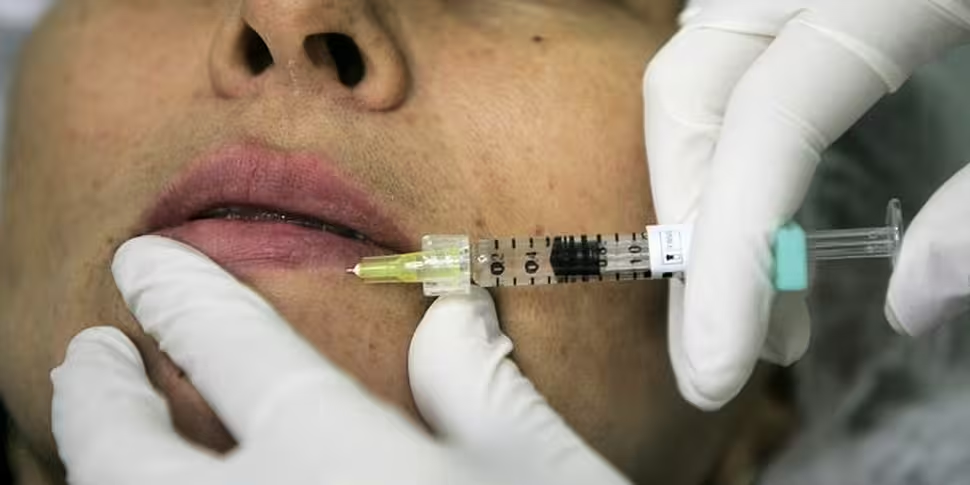There's a majority of people that like to attribute the Kardashian family to the world's ailments.
One thing we can almost certainly credit them with though is the growing number of people getting non-surgical cosmetic treatments.
Ever since honourary Kardashian Kylie Jenner appeared to grow a buxom pair of lips overnight - later admitting that there was more to it than one of her lip-kits - more and more people are seeking cosmetic procedures.
The treatments come under two categories - surgical and non-surgical. Surgical procedures involve the use of knife, with abdominoplasty (more commonly known as a 'tummy tuck'), breast augmentations and reductions falling under this heading. In non-surgical procedures, such as fillers, machines or needles are used instead.
"Non-surgical procedures are, 90% of the time, something you can do on your lunch break," Dr Paul Munsanje of Amara Clinic told The Pat Kenny Show. "You can go back to work. There's no down time with them.
"With surgery, because of the slightly more invasive character to them, we're seeing that a lot of people are postponing surgery until such time that that's the only option."
Non-surgical procedures are also more temporary options - Botox wears off after four months, and lip-fillers can now be dissolved.
Like most procedures, there are risks involved. Some dermal fillers, such as Botox and Myobloc, are composed of purified botulism toxin. When injected, botulism toxin causes temporary and minor muscle paralysis at the injection site which alleviates skin creasing. In some cases, however, the toxin can travel to other areas of the body and cause serious health problems.
Skin cell death is a rare side effect of dermal fillers that occurs in some patients. This may occur if the skin or other tissues suffer significant damage during the procedure or if an infection develops following treatment.
Skin cell death is most likely when dermal fillers are used to fill in skin around the lips and in the center of the forehead, and can sometimes lead to scarring and require additional surgery.

Making the decision
One woman, who wished to remain anonymous, got Botox at age 33, due to the "expressive face" she inherited from her mother.
"I noticed wrinkles coming up over my eyesbrows and forehead and around my eyes [...] It was high time," she said.
"At first, I was a little bit apprehensive, but it wasn't half as painful as I thought it would be. It was more like a mosquito bite."
She advises choosing your doctor carefully, and to not be afraid about going for the procedure.
Another woman has been getting Botox and lip fillers for two and a half years, calling it a "preventative measure".
"It was coming up to my 40th birthday and I decided to treat myself," she said. "if you don't treat those lines, they're just going to get deeper and deeper and deeper."
"I think I look quite natural. I don't think I look like I've had stuff done. I still have lines."
She receives Botox injections around her chin area, her eyes, between her eyebrows and her forehead.
Following a significant weight loss, she also underwent a 'tummy tuck' - a procedure which required seven weeks downtime.
Plastic surgery versus cosmetic procedures
As the popularity of these treatments grows, will we be seeing a fall-off in the number of people going under the knife? Ultimately, no - more often than not, people visit plastic surgeons for very different reasons,
"A plastic surgeon looks after patients who are referred to them with deformities, whether they be secondary to injuries or birth defects," Dr Páraic Reagan, President of the Irish Association of Plastic Surgeons said. "We deal with a lot of lower limb trauma, hand trauma and face trauma."
Plastic surgeons also work closely with skin cancer patients, as well as undertaking reconstructive surgery.
Dr Reagan said most plastic surgeons in the public sector work exclusively on medical cases, while many of those in the private sector work in both aesthetic and medical areas.
Post-Celtic Tiger, Dr Reagan said breast reductions are still common, as are 'tummy tucks'.
"It's commonly in ladies who've had a number of children, and they have a lot of loose skin on their abdomen afterwards. During the course of the pregnancy, the muscles that run down the centre of the abdomen usually get separated and usually that needs repairing as well."
Not as common nowadays? Face lifts - Dr Reagan puts this down to the fact that the procedure has changed ad developed throughout the year.
Overall though, Dr Reagan said aesthetic procedures are on the rise again as the economy continues to recover.









